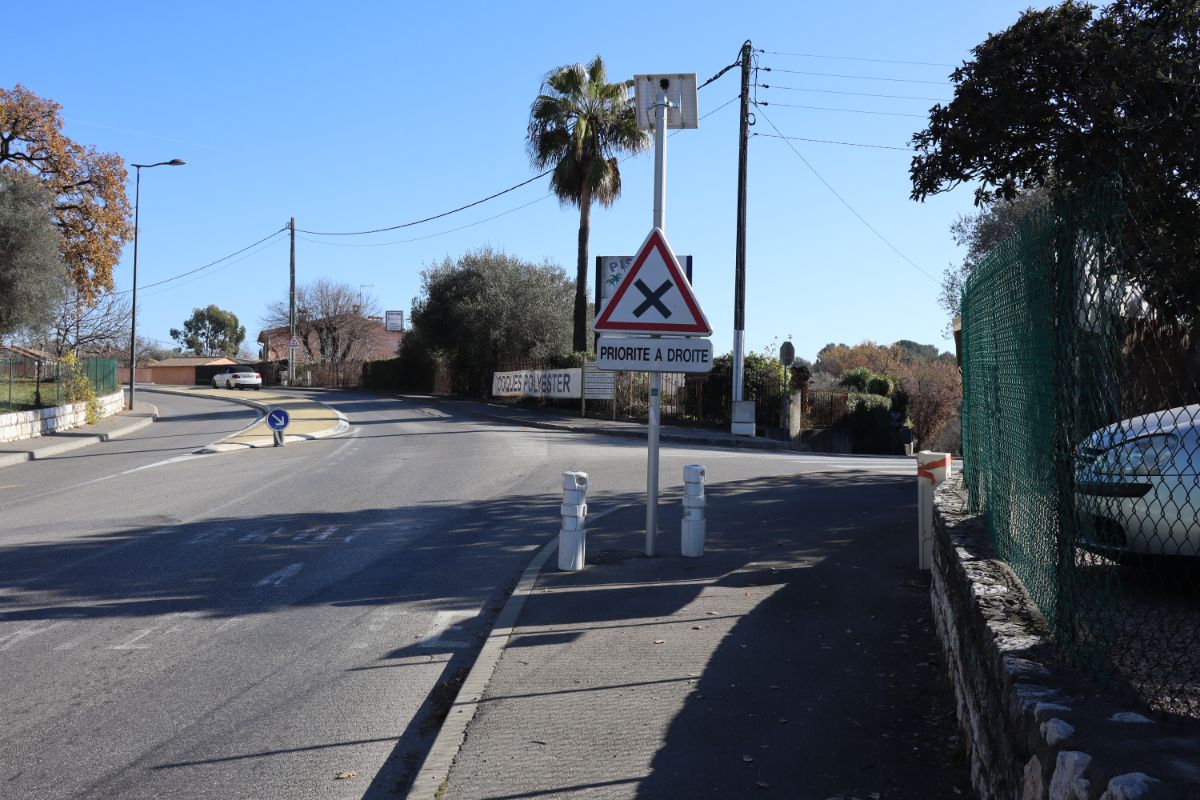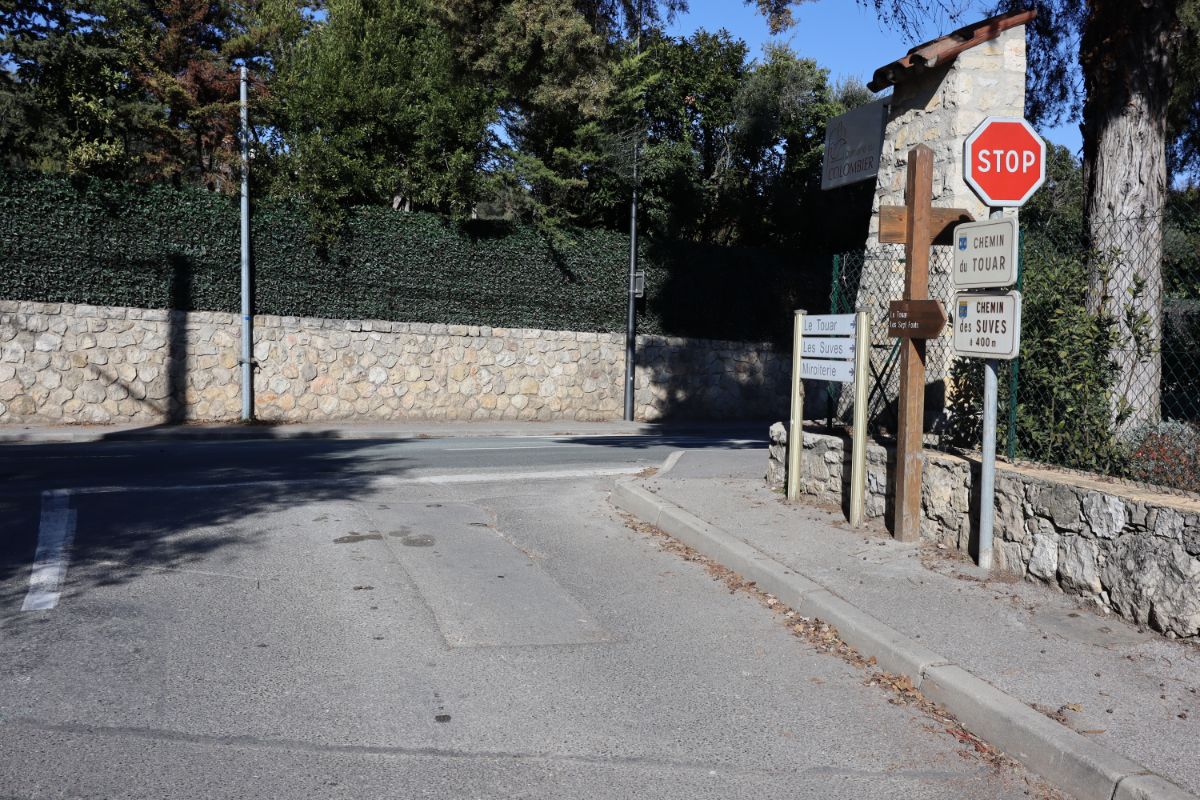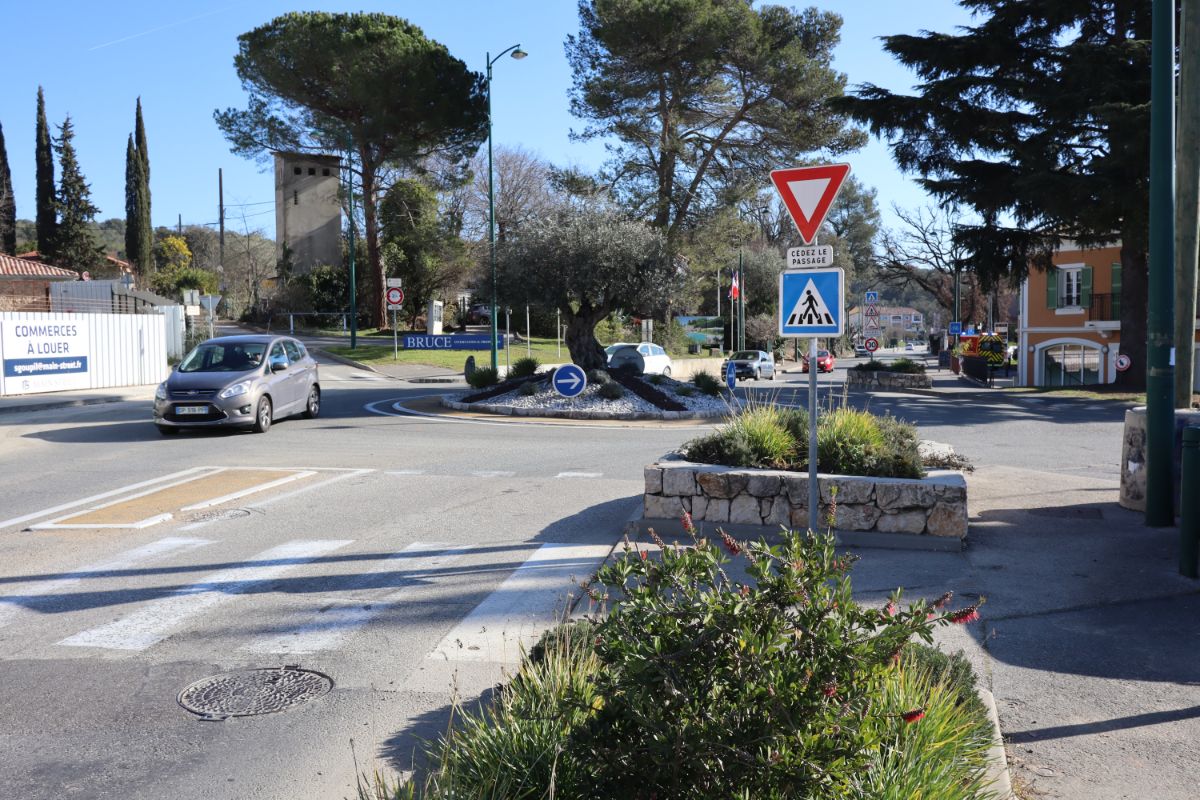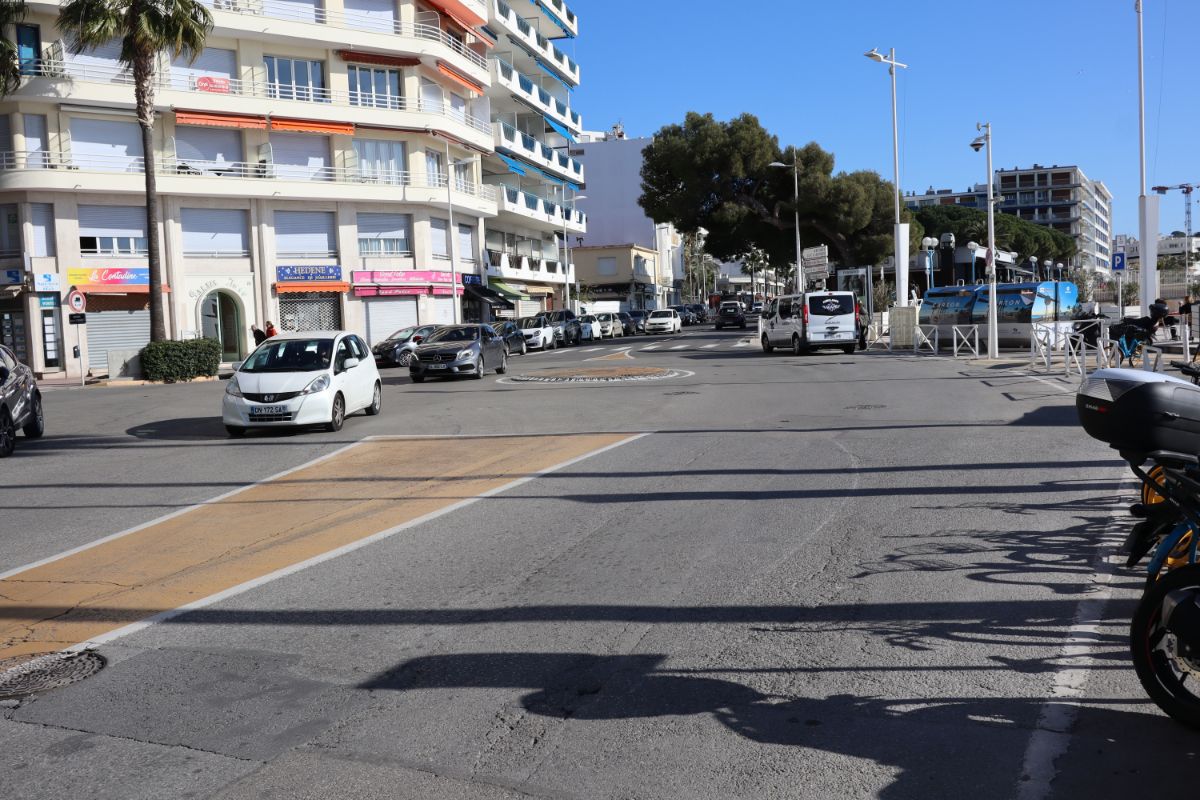ON THE ROAD
Generally road conditions are better than the UK from my experience fewer potholes but still be aware as you can find bad road conditions anywhere. Be careful after any heavy rain as it can wash down or loosen sizeable boulders which tumble down the gorges to provide something of an obstacle course. In the area where I cycle there are many cycle tracks (pistes cyclable). In busy areas these are often limited to 6 mph (10 kph) and need care as there are many pedestrians. In rural areas they provide a safer route. When route planning consider some of the quieter roads as it will make cycling more of a pleasure. I can provide some help in my local area if you contact me. French drivers tend to be more aware of cyclists and will often let you have priority, but do not assume it. If they are not a cyclist themselves there is usually a family member who is a cyclist. Do take care as you can always find inconsiderate drivers anywhere. Simple Tip - if you are cycling in the countryside in France towards a village often the house numbers indicate the number of metres to the centre of the village. For example if the house number is 6700 then it is 6,700 metres (6.7km) to the centre of the village.
Road Sense
Priority a droite
This is priority from the right. Normally it is in only in towns and villages. It is often indicated at the entrance to the village/town with the diagonal cross-roads sign. Any road joining you from the right has priority over you if there is no "Stop" or "Give Way" ("Cedez le Passage") sign on it at the junction, or no white lines at the junction with the main road. The white line is solid for a stop and dotted for a give way. This is totally different than the UK and has implications for cycling. Other vehicles coming from the right have right of way and you have to give way to them. Conversely if you are coming out of a side road you have priority over traffic on the "Main" road on your left. Never just take the priority always make sure the other vehicle is going to stop. Often other road users will give priority to cyclists but do not assume it. Remember for our UK readers everything is from the wrong side. Traffic arrives from the opposite direction to the UK. The left turn is the dangerous one. Be especially careful starting out in the morning, especially if there is no traffic as it is so easy to be on autopilot and start on the wrong side of the road.
Below is a photo of a standard priorite a droite junction. Note the sign (diagonal cross-roads), the absence of any line acros the side road, and no stop or give way (cedez le passage) on the side road. Often there will be no diagonal cross-roads sign at the junction. This junction is at Roquefort-les-Pins. Click on the photo for a full size photo.
Below is a photo of a standard side road junction. Note the stop sign on the side road, and the white line across the side road. This junction is at Roquefort-les-Pins about 200 metres from the the photo of the priorite a droit. Click on the photo for a full size photo.
Roundabouts
Be careful at roundabouts. Just apart from the fact that they are anticlockwise. Most are of the UK type where priority is for people on the roundabout. However there are still in some towns the old type where "prioritie a droite" (priority from the right) applies and traffic joining has priority. If you do not see a "cedez le passage" (give way) sign at each road joining the roundabout then be careful.
Below is a photo of a standard roundabout. Note the give way sign and the dotted white line across the roads joining. This junction is at Roquefort-les-Pins. Click on the photo for a full size photo.
Below is a photo of a priorite a droite roundabout. Note the absence of any signs and no white line across the roads joining. Traffic joining the roundabout has priority over traffic on the roundabout. This junction is at Juan-les-Pins. Click on the photo for a full size photo.
Road signs of interest to cyclists
Just a reminder all the road signs are in Kilometres and metres There are some road sign just specific to France which are of interest to cyclists and may not be obvious to their meaning.
Gasoil
This means that a vehicle has spilt diesel oil on to the road with obvious consequences for traction so take care if you see this sign.
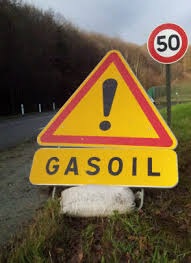 Slow down and take care ... or else.
Slow down and take care ... or else.
Chaussée Déformée
This literally means damaged road, so beware of potholes or very uneven road surfaces.
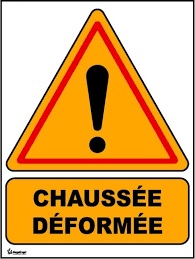 Beware of PotHoles.
Beware of PotHoles.
Chaussée Glissante
This means slippery road so again take care.
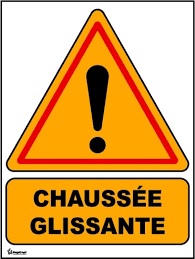 Take Care.
Take Care.
Circulation Alternée
Alternate Traffic. Traffic is one direction at a time and alternates. There will normally be lights or a person with a sign controlling traffic.
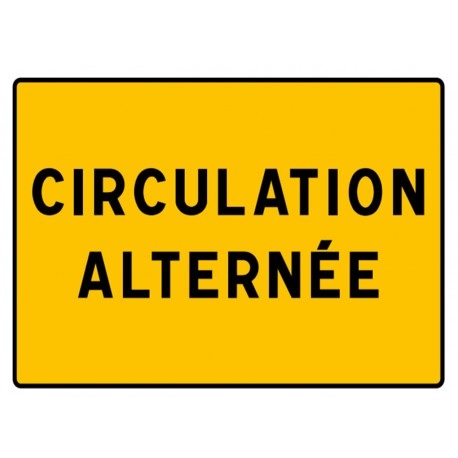 Slow Down and give priority.
Slow Down and give priority.
Inondation
This is road flooded. Be prepared to get your feet wet.
 Be prepared to get your feet wet.
Be prepared to get your feet wet.
Fauchage
It means mowing and that they are cutting back the greenery at the side of the road anything from grass to taking down trees. Often the most likely places for punctures
 Be prepared to have lots of mess on the road.
Be prepared to have lots of mess on the road.
Road Works
If there are traffic lights at road works remember that you will never see a green light. There are three lights like the UK and USA, top red for stop, middle amber displayed for a moment, and bottom flashing amber to indicate that you can proceed with caution.
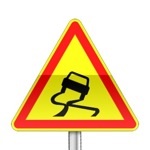 No commentary needed.
No commentary needed.
